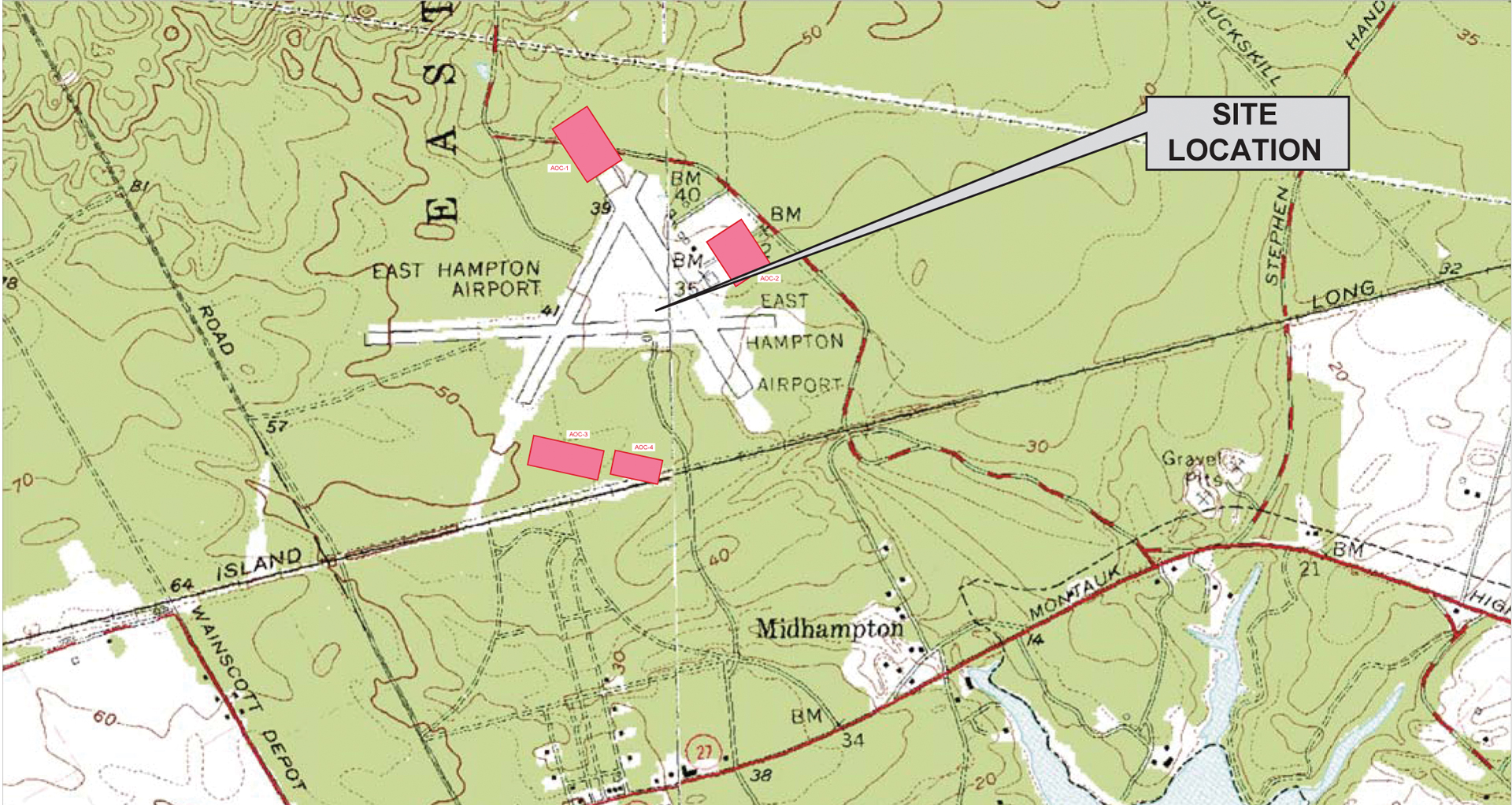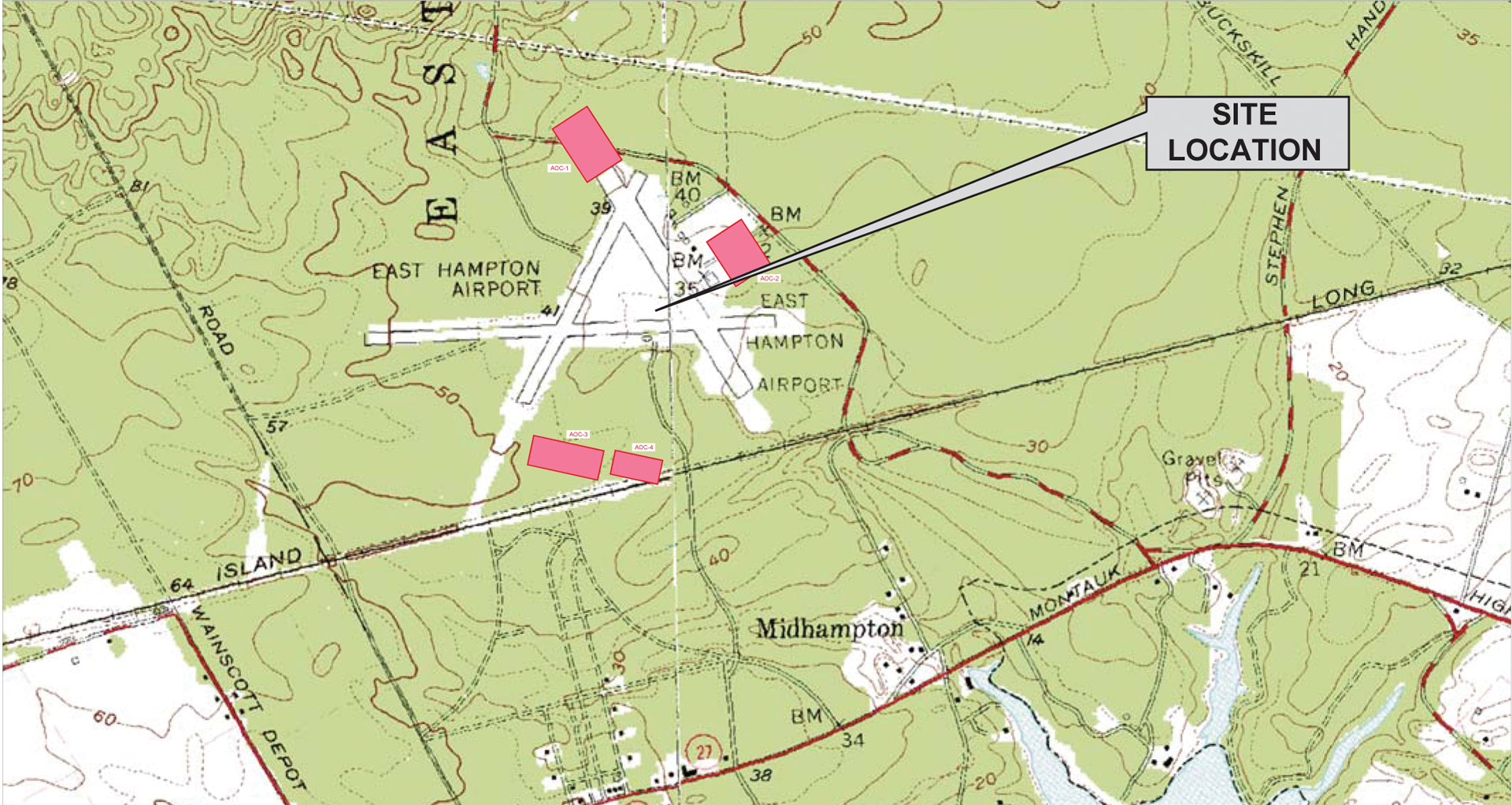DEC Study Finds Pollutants At Airport


The Town of East Hampton, which has already found itself on the receiving end of a class-action suit filed on behalf of Wainscott residents who fear their water may be tainted by the chemicals, has launched its own legal counter-offensive, filing suit against two local fire districts and nearby property owners, which it claims may be responsible for the groundwater contamination.
The East Hampton Town Airport has long been suspected as being at least one source of the water contamination that has been traced to private drinking water wells in Wainscott. Now, a report issued last week by the New York State Department of Environmental Conservation shows elevated levels of polyfluorinated compounds in groundwater samples taken from the 610-acre site.
Although the DEC report identifies four areas of concern and calls for additional study, it stops short of concluding the airport is the source of the contamination.
The DEC launched its study in April 2018, seeking to determine if polyfluorinated compounds, which are used in firefighting foam and in other industrial applications, would be found at the airport.
The DEC reported that it had found four separate areas at the facility where levels of the chemicals were well above the federal Environmental Protection Agency advisory levels for drinking water.
Meanwhile, as East Hampton Town struggles to bring the situation under control, it announced in mid-December that the Suffolk County Water Authority was putting the finishing touches on an aggressive effort to install 8.5 miles of new water mains through Wainscott, so that an estimated 500 residences in the hamlet could be connected to public water.
Supervisor Peter Van Scoyoc this week it is still too early to place the blame on the contamination solely on activities at the airport. The DEC study, he noted, “has yet to determine if the findings pose a threat to the public health. There have been other locations that have had quite high readings separate from the airport.” Studies would continue on and off the site, he added.
Nonetheless, the supervisor said he was happy to report that residents living in the affected area can now hook up to public water and he
advised them to do so.
Last year, after the water authority announced it had discovered trace amounts of contaminants in private wells, the town provided residents with bottled drinking water and made whole-house filtration systems available. After state aid was secured, the water authority began last August to install water mains throughout Wainscott, finishing the project just before Christmas.
Although the DEC report did not find elevated levels of the chemicals, known as PFOSs, in drinking water supplies at the airport, it did find four areas, where the levels were well above the federal threshold of 70 parts per billion. A level of 290 parts per billion was found in an area where firefighting foam had been sprayed during a mass casualty drill, and a similarly high level of 270 parts per billion was recorded in another area where there had been a plane crash and additional training drills. Elevated levels were also found near the airport fire station, where 170 parts per billion were detected, and near the East Hampton Town Police Department, where a level of 160 parts per billion was detected.
The DEC reached no conclusions with its findings and said additional study would be needed to determine a course of action.
On December 31, the town filed suit in New York State Supreme Court against the Bridgehampton and East Hampton Fire Districts as well as manufacturers of firefighting foam, including the 3M Corporation, and neighboring property owners seeking to protect itself from liability in the matter.
Van Scoyoc said while the problem will likely take years to wend its way to conclusion, he hoped that the arrival of public water to Wainscott meant the beginning of the end of the problem for residents there.
sjkotz@indyeastend.com



